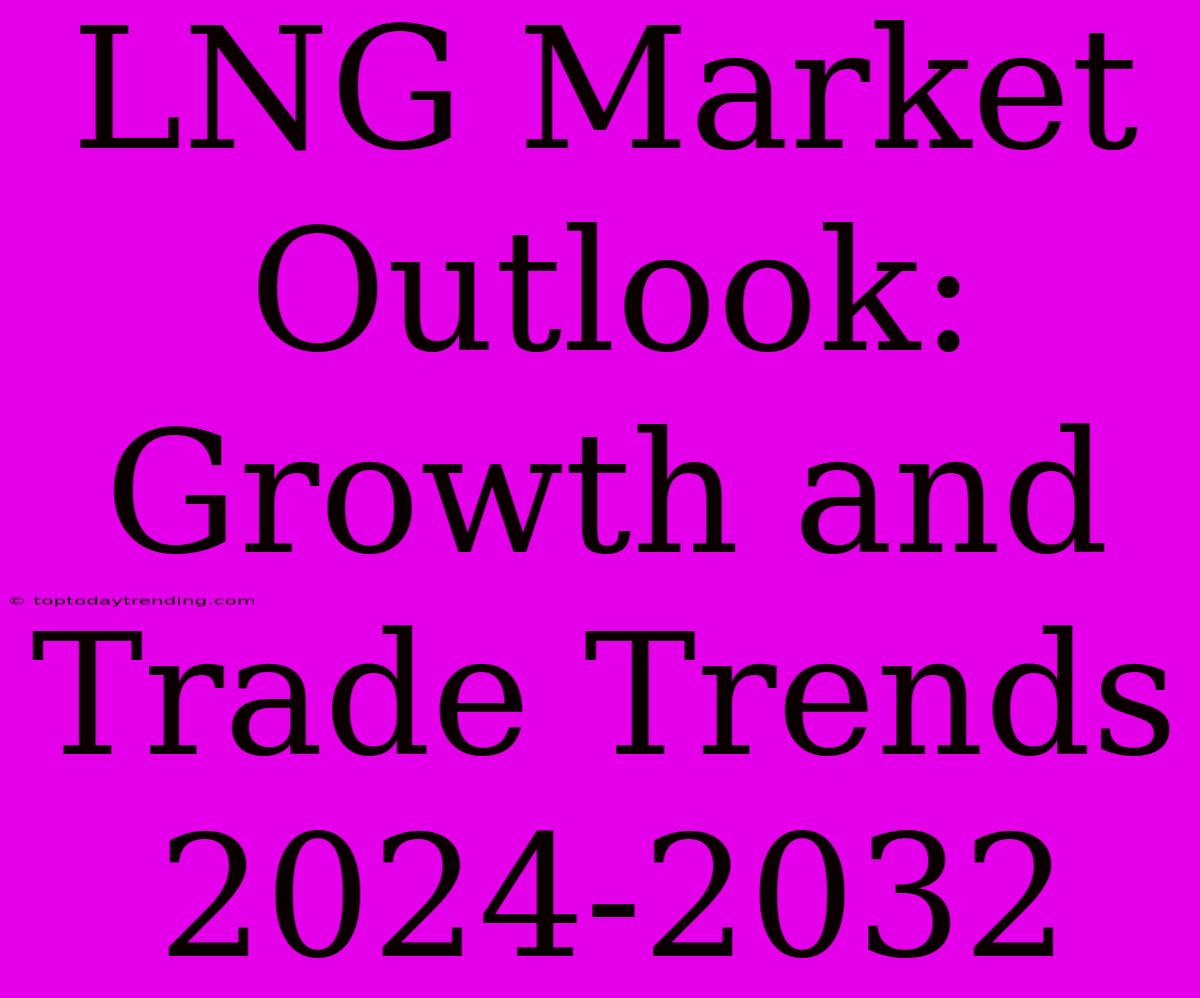LNG Market Outlook: Growth and Trade Trends 2024-2032
The global Liquefied Natural Gas (LNG) market is experiencing a period of significant growth, driven by several key factors including rising energy demand, increasing environmental concerns, and the shift towards cleaner fuel sources. This article delves into the key aspects of the LNG market outlook, exploring growth drivers, trade trends, and projected developments between 2024 and 2032.
Key Growth Drivers of the LNG Market
- Rising Global Energy Demand: The world's energy needs are constantly growing, primarily due to population expansion and economic development. LNG provides a viable and clean alternative to traditional fossil fuels, driving its demand across various sectors.
- Environmental Concerns and Shift Towards Clean Energy: The increasing focus on reducing greenhouse gas emissions and combating climate change is propelling the transition towards cleaner energy sources. LNG, with its lower carbon footprint compared to coal and oil, plays a crucial role in this transition.
- Shift in Energy Supply Dynamics: Global energy markets are undergoing significant changes, with a growing need for diversification and energy security. LNG imports offer countries a valuable tool to reduce their reliance on single-source energy suppliers.
- Technological Advancements: Continual improvements in LNG production, transportation, and regasification technologies are making LNG a more efficient and cost-effective energy source.
Trade Trends in the LNG Market
- Shifting Regional Dynamics: The LNG market is experiencing a shift in regional dynamics, with Asia emerging as the primary consumer. China, Japan, and South Korea are significant importers, while countries in Southeast Asia are also experiencing rapidly growing LNG demand.
- Increased Competition: The LNG market is becoming increasingly competitive, with new players entering the market and established producers expanding their capacities.
- Growing Importance of Long-Term Contracts: Long-term contracts are becoming increasingly important in the LNG market, providing stability and predictability for both suppliers and buyers.
- Emergence of Spot Market Trading: Spot market trading is also growing in importance, offering flexibility and responsiveness to changing market conditions.
Projected Developments in the LNG Market (2024-2032)
- Continued Market Growth: The LNG market is projected to continue growing significantly over the next decade, with analysts expecting robust demand driven by factors mentioned above.
- Increased Investment in LNG Infrastructure: There will be increased investment in LNG infrastructure, including liquefaction plants, transportation vessels, and regasification terminals, to meet the growing demand.
- Focus on Carbon Reduction: The LNG industry is expected to prioritize efforts to reduce its carbon footprint, exploring technologies like carbon capture and storage (CCS) and utilizing cleaner fuels.
- Technological Advancements: Continued advancements in LNG technology will further enhance efficiency, reduce costs, and expand the applications of LNG.
- Growth of Small-Scale LNG (SS LNG): The SS LNG segment is expected to grow significantly, providing clean energy solutions for remote areas and industrial applications.
- Shift Towards Green LNG: The focus on sustainability will drive the development of green LNG, produced using renewable energy sources.
Challenges and Opportunities
While the future of the LNG market looks promising, several challenges remain:
- Volatility in Natural Gas Prices: Fluctuations in natural gas prices can impact LNG prices, creating uncertainties for both suppliers and buyers.
- Environmental Concerns: The LNG industry faces scrutiny regarding its environmental impact, particularly in relation to methane emissions.
- Competition from Renewable Energy: Renewables are posing increasing competition to LNG, particularly in the power sector.
However, these challenges also present opportunities:
- Developing More Sustainable LNG Practices: The LNG industry can capitalize on opportunities to improve its environmental performance by implementing sustainable practices and technologies.
- Exploring New Applications of LNG: The industry can focus on developing new applications for LNG, such as in transportation and industrial sectors.
- Collaborating with Governments: Partnerships with governments can help address regulatory challenges and create a favorable policy environment for LNG development.
Conclusion
The LNG market is poised for substantial growth in the coming years, driven by a confluence of factors including rising energy demand, environmental concerns, and technological advancements. While challenges remain, the opportunities for innovation and sustainable development within the industry are vast. As the global energy landscape evolves, LNG will continue to play a vital role in shaping a cleaner and more secure energy future.

